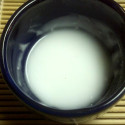I’m talking about those from bees, wasps & hornets, not a rock band. Bees are much less aggressive than their nasty counterparts but their bites can still cause discomfort and irritation.
The wasps seem to be everywhere this summer and in great numbers. Here are some tips to help avoid getting stung as well as some treatments for if you do:
- If you’re getting followed/buzzed by one of these critters, don’t panic or do fast movements as this gets them riled up and more determined to get the attacker, that would be you, in their eyes.
- When you spot a nest either up high or in the ground (you’ll see them entering and exiting), get out of this high traffic area immediately but again, not whirling & twirling. Eradicate the nest with a commercial wasp & hornet spray (I recommend the foaming type for best results) in the evening at least 2 hours after dark. This ensures that the buggers are less active and therefore less likely to be flying about to come after you. Wear protective clothing to cover your entire body – including your face & eyes – and gloves.
If you get stung, follow these steps to ease the effects on your body:
- If you are allergic to stings, always carry a bee sting kit with you. When you are stung, get to urgent care or ER asap.
- Remove the stinger immediately with tweezers or your fingernail. If you’ve been stung in an area that is inaccessible, get someone to remove it for you. The stinger holds the poison so its removal is critical to lessening your body’s reaction.
- Swab the area with rubbing alcohol or hydrogen peroxide to disinfect and reduce the chance of infection.
The following herbal and natural solutions can help soothe the itch and irritation, fight bacteria and reduce inflammation:
- Put a quart of water on to boil for an infusion while you mix up and apply the following paste.
- Mix 1/2 Tbsp. baking soda and ½ tsp water in a small dish. Apply in a generous but not super thick layer to the sting area to cover a circle approximately 3 inches in diameter. The paste will dry and become flaky and fall off in pieces. Repeat applications over the next few hours for a total of at least 4 or until the paste is gone.
- Vinegar or lemon juice, salt and meat tenderizer can be helpful too. Use what you have available.
- Make an infusion of: dried Nettle leaf (Urtica dioica). You can add fresh or dried mint leaves, lemon balm and/or lemongrass. Put all the herbs in a large teapot or heatproof jar and pour the boiling water over them. Lid the pot and let steep for 10 minutes. Strain and drink the entire pot over the next few hours. The histamines in the Nettle and other herbs will activate the body’s histamine response to get rid of the poison that you’ve received from the sting.
- Apply pure aloe vera gel to the sting area 3 – 4 times per day, either directly from a fresh cut leaf or from a bottle.
- Put a couple of drops of lavender, chamomile or tea tree essential oil on the sting area and rub into skin until absorbed.
- You can also take 1 Nettle capsule (Oregon’s Wild Harvest is the best brand) 3 times daily in addition to or in place of drinking the infusion.
Wasps and other varieties of stingers with wings are smart: I swear that the night after my recent morning sting – we’re talking at least 12 hours later – a wasp started buzzing me as I was spray painting some lamp bases: he associated the spraying sound to that of the wasp killer spray I had used on the in-ground nest 24 hours prior!
Outsmart them with your steps of calm evasion and natural treatments should they get you.
